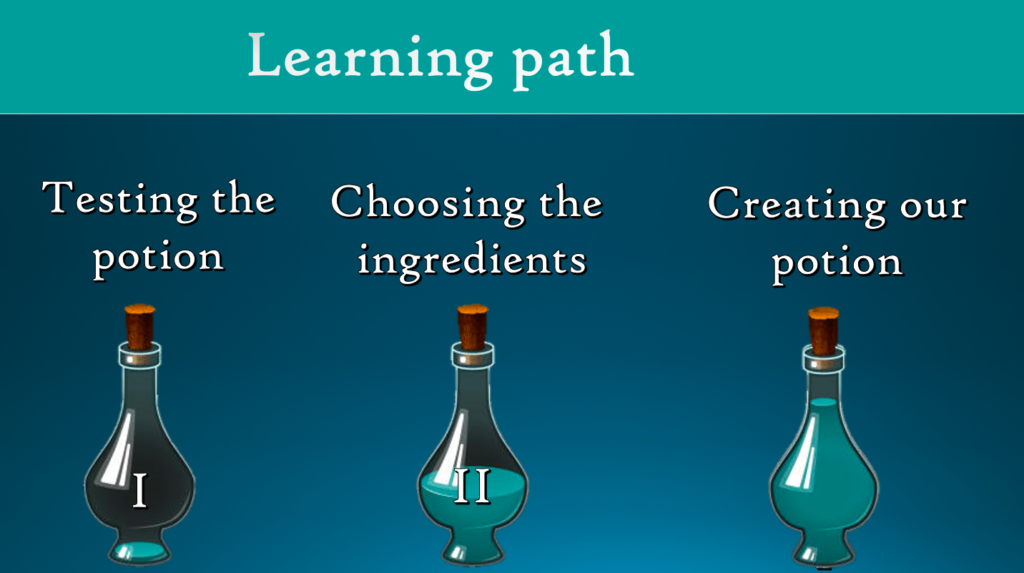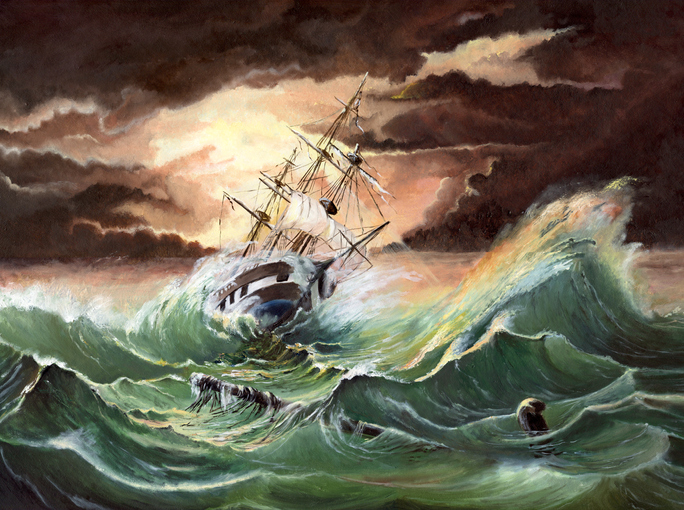The leviathan terrifies sailors, generating chaos and despair from the ocean’s depths; this analogy can apply to the feelings of uncertainty generated by the COVID-19 pandemic among university teaching staff. I imagine this, as it happened to me, feeling cornered when duty demanded repairing the damage inflicted on a ship badly battered and swallowed by this devouring pandemic monster that suddenly required us to migrate our educational practices from face-to-face teaching to complete virtuality at the turn of a page. All to the port side! It was a gamble to keep afloat the great educational ship already nearly destroyed by the sea serpent; the brave teachers had to throw themselves into the water.
“Antidotes against traditional lecture, gestated in an incubator of pedagogical innovation to create a potion to shorten the “cognitive, physical, and emotional distances.”
Tell me what the keel is doing, and I’ll tell you how it sails
The leviathan described in Hebrew “coiled” is a mythological creature that strikes with grip force. The COVID-19 disaster leaves evidence of two critical blows that probably gave way to the educational shipwreck: 1) the lack of connectivity for some because of social injustice and 2) a keel that failed to support the skeleton of that ship unprepared for virtual waters. The famous refrain above speaks for itself: The problem was not the monster; it was the keel. Without rhyme or reason, virtual sessions on various platforms became a containment measure. Teachers deployed their didactics as learners simultaneously tried to resolve how to have a connected computer (in the best case) while paying attention in class.
The scientist Nazareth Castellanos mentions that the prefrontal cortex controls mindfulness and the internal interpretation that each one makes of reality results from the continuous interactions between brain and organism. Given this, neuroscientists report that the dichotomy between mind and body must be ended because the brain memorizes and assesses the body’s sensations to make decisions. Imagine this scenario: a four-walled classroom, a 40-slide presentation, and students apparently listening. Now, let us jump to virtuality, the only change being using a platform that allows synchronous virtual connection. EUREKA!
We were naïve to believe that the leviathan agreed to a truce before the calm and silence of a black screen, without answers or emotions. Why do we underestimate the body and its emotions when we know that the body is where the experience is framed (Castellanos, 2022)? The leviathan scares us, but neither the sea serpent nor the virus created the shipwreck. The truth is that that ship had already sunk before sailing. Anchored to a reductionist paradigm, educators placed the easiest bet on the strategy of the magistral exposition, but that was not enough to lift the educational ship and prevent it from sinking in the face of the challenges of the twenty-first century.
Accompanying the brave sailors
Transferring the focus from teaching to learning through powerful and empowering digital tools is proposed. It requires personalized accompaniment by the teaching staff, being in company to alleviate the uneasiness and non-presence of virtuality. There is a connection, but no people connected: big difference.
An experience is shared here of teaching staff accompaniment entitled: “Antidotes against traditional lecture,” conceived in an incubator of pedagogical innovation, a Learning Laboratory. The proposal includes activities such as simulation, active listening to the explanation about using the tool for pedagogical mediation, and constructing a pedagogical resource for class sessions. It came from the intention of showing an alternative strategy to classes focused on teaching to shorten “cognitive, physical and emotional distances” (Badilla, 2016). The learning path (Image 1) indicates the different moments of the experience, where the teaching staff brings as part of its resources a presentation (PDF or PowerPoint format) to produce an antidote that integrates interactive evaluation activities through the use of the Nearpod tool. Specifically, it shows how to add content: classic slides, interactive videos, and collaborative board and survey activities.
The final slogan involves creating a potion simultaneously with the facilitators and presenting it to other colleagues as part of the challenge. Also, during the accompaniment, teachers should keep their cameras on because having the face and hands stimulates more neural resources than other areas; it is transcendental to see each other smile. (Castellanos, 2022). In addition, it promotes a learning environment of trust, openness, and the interactive use of other digital tools. Google Forms and Geniall.ly are favored, which allow the team in charge (pedagogical managers) to take the “pulse” and continuously capture the attention of teachers who assume the role of learners.

The socialization of the antidotes requires:
- Carry out activities to verify what is explained in classes. People tend to forget 40% of the information, so creating emotionally pleasant activities stimulates the brain, while boring activities take learning uphill (Castellanos, 2022).
- Pause intentionally to reflect, assimilate, and connect ideas. Pauses so that explanations can achieve learning expectations are necessary because the brain is not an immediate system; thus, transitions are critical. For Zinn (2009), mindfulness is awareness and attention; cultivating it implies connecting with the world, us, and others.
This strategy served as teacher support during the pandemic; however, it must persist to improve online education and learning. It did not end with the pandemic; on the contrary, it must be sustained for continuous improvement.
If educating is seducing with gems (Rojas, 2016), then this input and the figure of the leviathan will be inspiring, and the didactic experience raised in this article leads to reflection. It is essential to clarify that, although it was an experience that supported the work of teachers during the pandemic, for continuous improvement, we must continue to assess to adapt to the needs of learners and continue teacher accompaniment. Universities continue to face the challenges of educational lags caused by the pandemic and the legacy of a traditional paradigm insufficient to meet the challenges of the twenty-first century. However, fear, uncertainty, lack of access to connection (translated into social injustice), misinformation, and little accompaniment of students by teachers continue to stalk us as significant crises of the educational system. After all, the leviathan is a myth, but without a keel to gird the strength of the sails, we will continue navigating without any defined port.
But… who is the creature that roams the seas and frightens education today?
Recently, the case of a professor at a public university who failed 18 students to use Artificial Intelligence (AI) to answer an exam made the news. Thus, a white flag was launched that invites a critical and sustained dialogue that cuts across the vision of academic islands where higher education institutions work to open the way to a sea of knowledge. What is the post-pandemic world being brewed? Are universities recognizing, reflecting, and validating new AI technologies for education? Are they preparing for knowing, doing, being? And given this, what is the knowledge necessary to respond to the challenges of the twenty-first century? We thought the leviathan was a pandemic, but the world continues and remains anchored to an archaic and traditionalist vision that has existed for a long time. This new creature that emerges and lashes out against university professors and the education of the future seems to be a visceral emotion experienced by all human beings. Could the new Leviathan be the AI-based tool that will change today’s educational paradigm?
“The great leviathan is the one creature in the world which must remain unpainted to the last.” – H. Melville.
About the author
Stefany Ocampo Hernández (socampo@castrocarazo.ac.cr) is a graduate of the career of Early Education of the University of Costa Rica, Master in Pedagogy by the National University of Costa Rica. Since 2017, she has been dedicated to accompanying university teachers and researching digital tools that enhance learning, especially concept maps, such as tools that allow the graphic representation of knowledge from developing higher-order thinking skills. She is a Ph.D. student in education at the Faculty of Philosophy and Letters at the University of Buenos Aires.
References
Badilla Saxe, E. (2016). Educación sin distancia. https://www.castrocarazo.ac.cr/web/vida-universitaria/noticias/educacion-sin-distancia
Castellanos, N. (2022). Neurociencia del cuerpo: como el organismo esculpe el cerebro. Editorial Kairós.
Rojas, E. (2016). Cinco consejos para potenciar la inteligencia. Editorial Planeta.
Zinn, K. (2009). Mindfulness en la vida cotidiana: donde quiera que vayas, ahí estás. Gaia.
Editing
Edited by Rubí Román (rubi.roman@tec.mx) – Editor of the Edu bits articles and producer of The Observatory webinars- “Learning that inspires” – Observatory of the Institute for the Future of Education at Tec de Monterrey.
Translation
Daniel Wetta
This article from Observatory of the Institute for the Future of Education may be shared under the terms of the license CC BY-NC-SA 4.0 
)
)


)